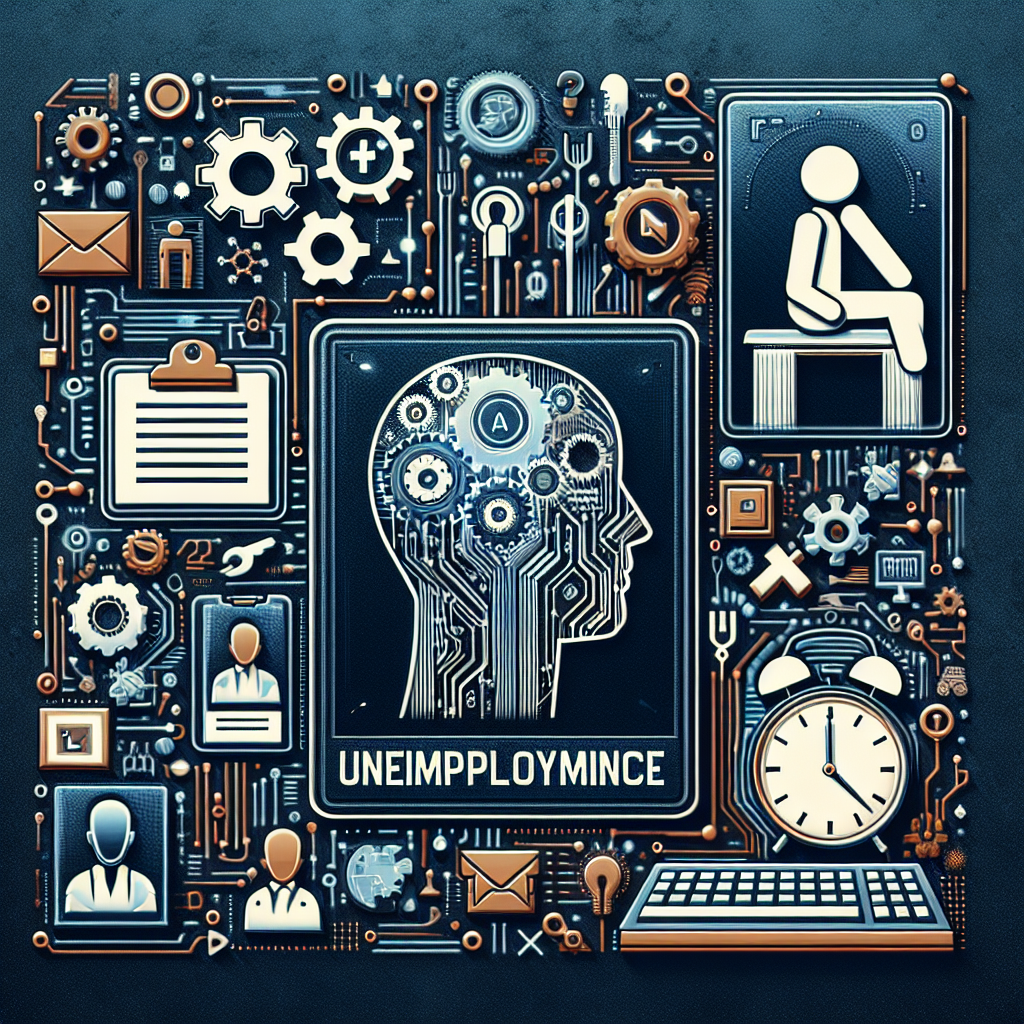Artificial intelligence (AI) has been a major topic of discussion in recent years, with many experts predicting that it will revolutionize the way we work and live. While AI has the potential to bring about many positive changes, there are also concerns about the impact it will have on employment. As AI technology continues to advance, there is a growing fear that it will lead to widespread unemployment as machines take over jobs that were once done by humans. In this article, we will explore the risks of unemployment posed by AI, as well as the challenges that need to be addressed in order to mitigate these risks.
The Risks of Unemployment
One of the main concerns surrounding AI is the potential for widespread job displacement. As machines become increasingly sophisticated and capable of performing tasks that were once thought to be the exclusive domain of humans, many fear that large numbers of workers will be rendered obsolete. This could lead to a significant increase in unemployment rates and create economic instability.
Another risk of AI-related unemployment is the exacerbation of income inequality. As AI technology continues to advance, it is likely that jobs that require lower levels of education and skill will be the first to be automated. This could result in a situation where those with higher levels of education and skills are able to adapt to the changing job market and secure well-paying jobs, while those with lower levels of education and skills are left behind.
In addition to these risks, there is also a concern that the rise of AI could lead to a decrease in job quality. As more and more tasks are automated, there is a possibility that the jobs that remain will become more monotonous and less fulfilling. This could have negative implications for workers’ mental health and well-being.
Addressing the Challenges
While the risks of AI-related unemployment are significant, there are steps that can be taken to address these challenges and mitigate their impact. One key strategy is to invest in education and training programs that will help workers adapt to the changing job market. By providing workers with the skills they need to thrive in a digital economy, we can help to ensure that they are not left behind by advances in AI technology.
Another important step is to create policies that support workers who are displaced by AI-related automation. This could include measures such as retraining programs, income support, and job placement assistance. By providing a safety net for workers who are affected by automation, we can help to mitigate the negative impact of AI on employment.
In addition to these strategies, it is also important to encourage the development of AI technology that is designed to augment rather than replace human workers. By focusing on creating AI systems that work alongside humans to enhance their productivity and efficiency, we can ensure that the benefits of AI are shared more broadly across society.
FAQs
Q: Will AI lead to widespread unemployment?
A: While AI has the potential to automate many tasks currently performed by humans, it is unlikely to lead to widespread unemployment in the near future. However, certain industries and job roles may be more vulnerable to automation than others.
Q: What can be done to mitigate the risks of AI-related unemployment?
A: There are several strategies that can be employed to address the challenges posed by AI-related unemployment, including investing in education and training programs, creating policies to support displaced workers, and encouraging the development of AI technology that augments human workers.
Q: How can workers adapt to the changing job market?
A: Workers can adapt to the changing job market by acquiring new skills and knowledge that are in demand in the digital economy. This may involve participating in training programs, pursuing further education, or seeking out opportunities to gain hands-on experience with AI technology.
Q: What role can government play in addressing the risks of AI-related unemployment?
A: Governments can play a crucial role in addressing the risks of AI-related unemployment by creating policies that support workers who are displaced by automation, investing in education and training programs, and promoting the development of AI technology that enhances human productivity.
In conclusion, while the risks of AI-related unemployment are significant, there are steps that can be taken to address these challenges and mitigate their impact. By investing in education and training programs, creating policies to support displaced workers, and encouraging the development of AI technology that augments human workers, we can help to ensure that the benefits of AI are shared more broadly across society. By taking proactive steps to address the risks of AI-related unemployment, we can help to create a more inclusive and equitable future for all.

